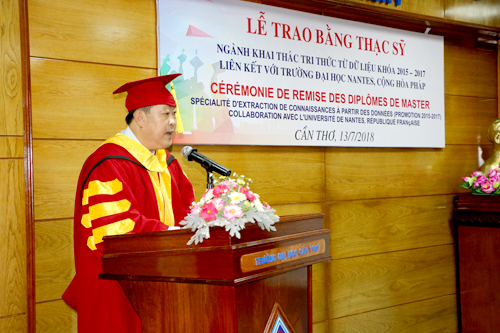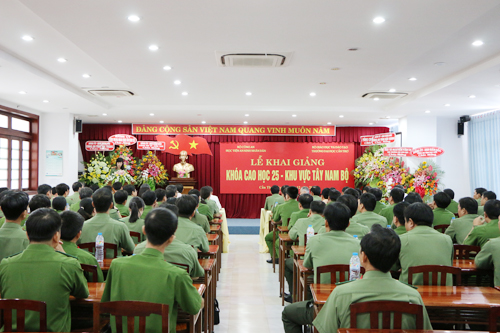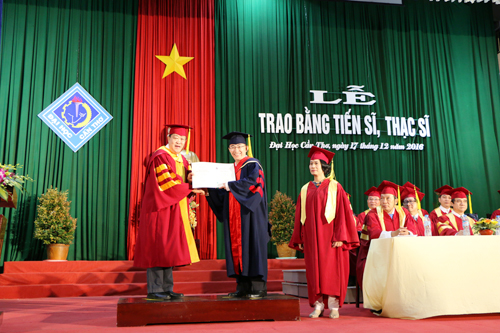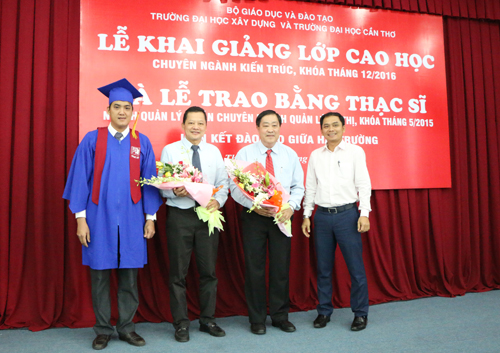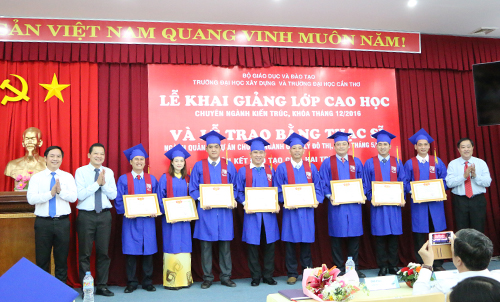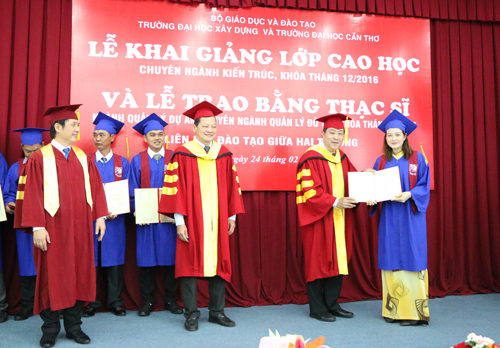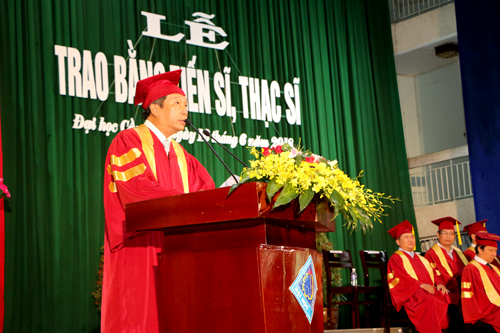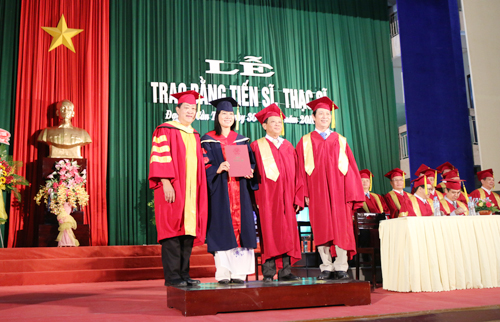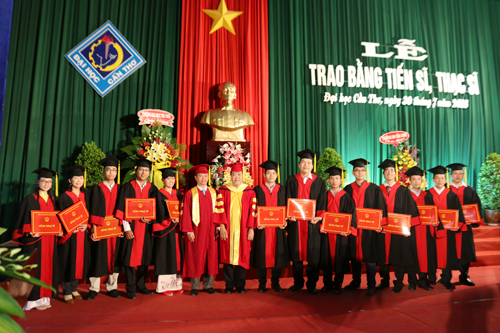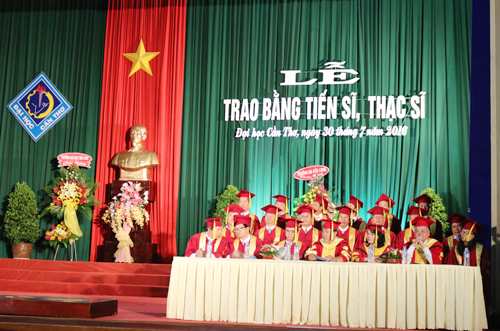
 Tên đề tài: “Tạo dòng hoa huệ (Polianthes tuberosa L.) đột biến bằng tia gamma (60Co) trong điều kiện in vitro”.
Tên đề tài: “Tạo dòng hoa huệ (Polianthes tuberosa L.) đột biến bằng tia gamma (60Co) trong điều kiện in vitro”.
 Tác giả: Đào Thị Tuyết Thanh, Khóa: 2013
Tác giả: Đào Thị Tuyết Thanh, Khóa: 2013
 Chuyên ngành: Công nghệ sinh học; Mã số: 62420201. Nhóm ngành: Khoa học sự sống.
Chuyên ngành: Công nghệ sinh học; Mã số: 62420201. Nhóm ngành: Khoa học sự sống.
 Người hướng dẫn chính: PGS.TS. Nguyễn Bảo Toàn - Hội Sinh vật cảnh TP Cần Thơ.
Người hướng dẫn chính: PGS.TS. Nguyễn Bảo Toàn - Hội Sinh vật cảnh TP Cần Thơ.
- Tóm tắt nội dung luận án
Nghiên cứu được thực hiện nhằm chọn lọc một số dòng hoa huệ đột biến in vitro bằng xử lý tia gamma (60Co). Hai dạng hoa kép được chọn với số cánh hoa nhiều hơn 12 cánh, kích thước to và có mùi thơm so giống đối chứng.
Vật liệu ban đầu được nuôi cấy từ mẫu đỉnh sinh trưởng. Sử dụng môi trường nuôi cấy cơ bản bổ sung 1,0 mg/l NAA và 4,0 mg/l BA tạo nguồn mô sẹo (trên giống hoa huệ đơn) và cụm chồi (trên giống hoa huệ kép) để chiếu xạ.
Liều gây chết 50% (LD50) ở hoa huệ đơn khoảng 10 - 15 Gy (giá trị tính là 10,96 ± 2,96 Gy) trong khi ở hoa huệ kép khoảng 20 - 25 Gy (giá trị tính là 22,91 ± 4,01 Gy).
Trong giai đoạn thuần dưỡng, sự khác biệt về hình thái lá và chồi của cây con không nhận thấy rõ ràng.
Ở giống hoa đơn, có sự sự gia tăng số cánh hoa từ 6-8 cánh ở mỗi phát hoa với mùi thơm hơn.
Trong số 18 dòng đột biến khác nhau từ giống hoa huệ kép khi trồng ở Tiền Giang, chọn được 2 dòng đột biến với 22 và 36 cánh ở liều chiếu xạ 20 Gy (đã được theo dõi qua thế hệ hoa thứ 2) và có sự đa dạng di truyền so với giống gốc khi phân tích PCR - ISSR và giải trình tự vùng ITS1/4.
- Những kết quả mới của luận án
+ Phương pháp nuôi cấy đỉnh sinh trưởng tạo ra lượng lớn nguồn vật liệu sạch bệnh cho nghiên cứu.
+ Kết hợp kiểu hình, các đặc tính nông học và đánh giá kiểu gen đã chọn ra được 2 dòng hoa huệ đột biến có triển vọng cho nhân giống và sản xuất.
- Các ứng dụng/khả năng ứng dụng trong thực tiễn, các vấn đề cần tiếp tục nghiên cứu
- Khả năng ứng dụng trong thực tiễn:
+ Xác định LD50 và quy trình chọn tạo giống hoa huệ cần thiết cho nghiên cứu và ứng dụng sau này.
+ Tạo ra các dòng hoa huệ đột biến với kiểu hình mới và đa dạng hóa nguồn gen cho sản xuất và chọn giống.
- Các vấn đề cần tiếp tục nghiên cứu:
Theo dõi đặc điểm nông học của các dòng hoa huệ đột biến mới chọn lọc được để đánh giá tính ổn định về tính trạng đột biến. Sau đó, nhân nhanh số lượng cây để ứng dụng cho sản xuất và thương mại.
- Thesis summary
This research was carried out to select a number of in vitro mutant tuberoses (Polianthes tuberosa L.) lines by irradiating 60Co gamma rays. The selected tuberoses should be of the double flower types with more than 12 petals, having larger flower size and fragrance in comparison to those of control varieties which were cultivated in An Giang province.
The meristem culture technique was used to induce the experimental materials. Basic medium was MS medium supplemented 1.0 mg/l NAA and 4.0 mg/l BA to create callus (on single petal variety) and shoot clusters (on double petal one) for gamma irradiation.
The LD50 value of single petal tuberose variety obtained about 10 - 15 Gy (the counting value was 10.96 ± 2.96 Gy) whereas the LD50 of double petal one to be about 20 - 25 Gy (the counting value was 22.91 ± 4.01 Gy).
At the acclimatization stage, the differences in leaf and shoot phenotypes were not clearly recognized.
In the single petal tuberose lines, there were the increases of the number of petals from 6 to 8 in each inflorescence (instead of 6 flowers) with better aroma.
In the double ones, there were 18 phenotypes of different numbers of petals. The agronomic traits of the two mutant lines with the characteristics of large and fragrant flower having 22 and 36 petals at the dose of 20 Gy enabled them to be the most potential ones as observed through the second generation flowers in Tien Giang province. There was DNA diversity evaluation of these two mutant lines when compared to the original variety using PCR - ISSR technique and sequencing the ITS1/4 regions.
- Novel Achievement
- The method of meristem culture brought about a large number of free disease samples as a source of research material.
- The combination of phenotypes, agronomic traits and evaluation of genotypes for selecting two promising mutant tuberose lines for propagation and production purposes.
- Practical applications and further research
- Practical applications:
+ Determining the lethal dose of 50% (LD50) and protocol for selecting the mutant tuberoses were necessary for future research and application.
+ The results of this thesis were not only used to induce mutant tuberose lines with new phenotypes but also helped to diversify gene sources for production and breeding.
- Further research:
Evaluating the two mutant tuberose lines in the number of petals associated with the characteristics of flower size and fragrancy. Then, propagating them rapidly for production and trade.
- Xem chi tiết nội dung luận án
- Xem thông tin đăng tải tại Website Bộ giáo dục và Đào tạo. (Nhập tên NCS vào ô tìm kiếm)





